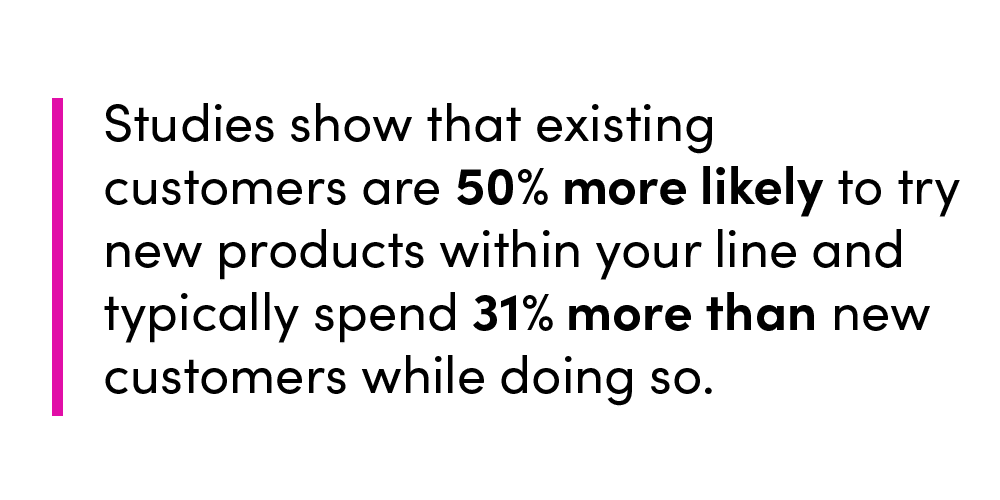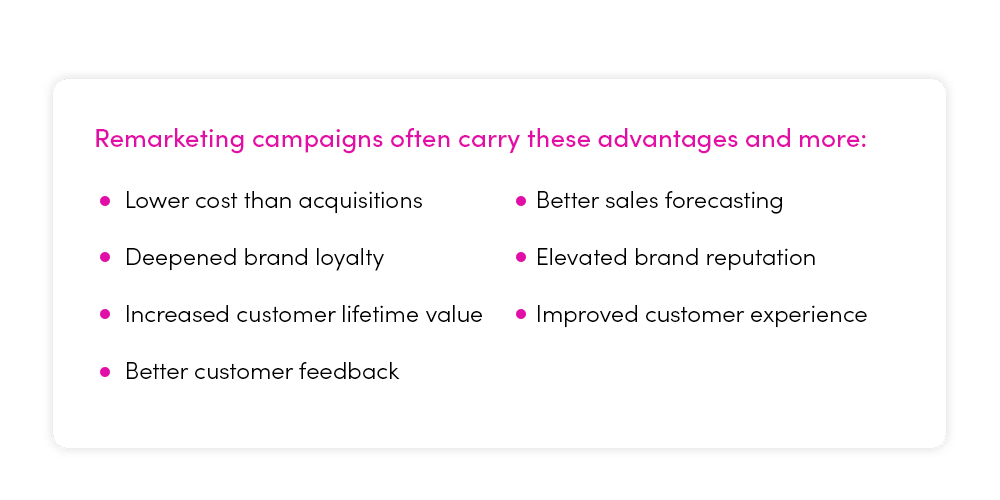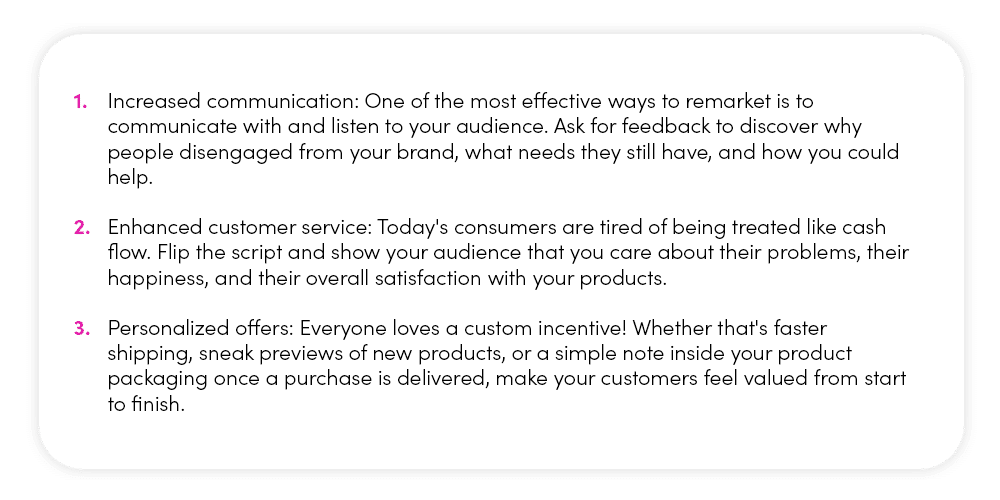It’s no secret that a slew of factors affects a brand’s ROI. From the marketing that drives brand awareness and audience engagement to pricing strategies and labor costs, a company’s financial returns can fluctuate wildly based on how they make their behind-the-scenes decisions. Today we’re honing in on two key components that have the power to elevate or damage your business’s ROI – remarketing and acquisitions – and where you should focus your efforts if you want to maximize your investment gains.
Want an inside tip? Yes, new customer acquisition and remarketing go hand-in-hand, and both are necessary for long-term business growth, but nine times out of ten, remarketing will give you the most bang for your ad spend. Direct from the (human)x team to your internal creatives, here’s a closer look at how acquisition vs. remarketing costs compare, the many benefits of prioritizing remarketing and customer retention strategies, and retention marketing best practices to help your business hold onto its valuable client base.
Customer Acquisition vs. Remarketing: A Cost Comparison
Acquisition and remarketing are terms that are thrown around quite frequently in creative circles, but not everyone is familiar with the ins, outs, and associated costs of each process. So, let’s break it down:
Customer Acquisition: The multi-step process of turning target consumers into buyers by walking them through sales funnel steps. Acquisition includes identifying, attracting, nurturing, educating, and converting customers, all of which requires thorough market research and adaptable marketing strategies.
Customer acquisition will always cost a business more than remarketing because of the multiple steps it requires, and the overwhelming amount of manpower and ad spend it takes to accomplish those steps. Specifically, a recent Forbes article highlighted that it costs businesses four to five times more to acquire new customers than it does to retain existing ones. You can calculate your brand’s specific acquisition costs by following this formula: (cost of sales + cost of marketing) ÷ number of new customers.
Remarketing: After you’ve warmed up a lead or converted a consumer to a customer, retargeting is the top-performing digital marketing strategy that helps brands reconnect with customers and move them toward making an initial (or another) purchase. Marketers also have a plethora of tools at their disposal to help with improving customer retention, including email, display ads, promotional offers, loyalty incentives – the list goes on, and we’ll dive deeper into each one below.
Studies show that existing customers are 50% more likely to try new products within your line and typically spend 31% more than new customers while doing so. What’s more, a Marketing Metrics report highlighted the fact that a brand’s chances of selling to an existing customer can be 14 times higher than the probability of capturing a new one. Find your company’s retention rate with this formula: CRR = [(E-N)/S] x 100, where “S” equals your starting customers, “E” equals the number of customers you have at the end of a specific quarter, and “N” equals the number of new customers gained in that quarter.

Benefits of Customer Retention Marketing
The goal of customer acquisition is to bolster a consumer base, increase a company’s market share, and boost revenue, which sounds great on paper – but this also means your brand must constantly cycle through lead generation, brand awareness, and lead nurturing to turn a profit. It can be exhausting and very costly to cast a broad audience net, attempt to capture your warmest leads, channel them into your sales funnel, and hope for conversion.
On the other hand, there are multiple benefits to focusing on remarketing campaigns over acquisitions. The goal of remarketing is to remind already interested customers about your brand and encourage them to take action, meaning there’s no need to dig up new leads.

Top these advantages off with a recent Bain & Co. study, which found businesses that increase customer retention by just 5% see profit increases of 25% to 95%, and remarketing could be your path toward a larger ROI. So how can your brand pivot from an acquisitions focus to concentrate on remarketing? The truth is, adopting a remarketing-first attitude won’t happen instantly, and it will take effort, but you can start learning key retention marketing best practices today by following the strategies outlined below.
Customer Retention Strategies: Retention Marketing Best Practices You Can Implement Today
If you’re ready to shift your ad spend toward improving customer retention, we’ve got the strategies you need. After years of helping clients refocus their budgets and optimize their resources, (human)x is sharing its tips and tricks with you. Use these methods to re-engage and earn the loyalty of your customers, find out why they may have disengaged from your brand, and ultimately bring them back into your brand family. offering incentives to re-engage, personalizing interactions and incentivizing loyalty.


Remember that, just like in most areas of marketing, it’s vital to monitor your remarketing campaign metrics as you move through this process. Keep a close watch on repeat purchase rates, customer satisfaction, and CLTV to ensure your remarketing campaign is truly improving customer retention.
Thrift Books: A Case Study in Improving Customer Retention
All this discussion about remarketing strategies and retention marketing best practices is only useful if it can be applied to your business. To give you a real-world example of how remarketing and customer retention strategies can be done well, let’s take a closer look at Thrift Books and their extremely effective loyalty programs.
Many people know Thrift Books as a highly affordable bookstore, but books at competitive prices aren’t difficult to find these days – so what is this brand doing differently than its competition?
- Free books instead of discounts: Customers can earn points on every purchase and redeem those points for free merchandise.
- Tiered reward system: The more you spend, the more points you earn, which can then be exchanged for higher-value books.
- Magical brand experiences: Thrift Books celebrated their 20th anniversary by hosting a Willy Wonka-style giveaway and flying in five lucky winners for a private facility tour, where they were given “as many free books as they could carry home.”
- Collectible giveaways: The company also released limited-edition bookmarks that customers could collect with purchases, and these bookmarks went viral on social media.
- Thrift Books 4 Teachers: To give back to their communities, Thrift Books locations created a special teacher loyalty program with free book incentives.
Developing A Re-Engagement Strategy for Your Brand
It can be overwhelming to create new remarketing strategies for your brand – or maybe your team has just hit a creative block and needs a fresh injection of ideas. Either way, (human)x is here to help. With decades of experience designing captivating remarketing campaigns for clients, (human)x has the insight and the resources to increase your brand’s customer retention and save you valuable ad spend. Our unique tools like humanView can extract unique human insights that help brands engage with customers on a deeper level that builds true connection and loyalty. If you’re ready to make your brand matter more, reach out to the (human)x team for details.
